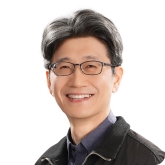- Professor
- Emeritus Professor
- Joint Professor
- Adjunct Professor
- Invited Professors
- Research Professor
Professor Min, Bumki (민범기)
2022.06.20 08:41
-

-
Position: ProfessorTel&office No: +82-42-350-3234E-mail: bmin(at)kaist.ac.krHomepage: http://photonics.kaist.ac.kr/ResearchField: Optics
Educations
-
2006 California Institute of Technology (Ph.D. in Applied Physics)
-
2003 California Institute of Technology (M.S. in Applied Physics)
-
2001 Seoul National University (M.S. in Electrical Engineering)
-
1999 Seoul National University (B.S. in Electrical Engineering)
Experiences
-
2022~Present Professor, Department of Physics, KAIST
-
2021~2022 Professor, Department of Mechanical Engineering, KAIST
-
2011~ 2021 Associate Professor, Department of Mechanical Engineering, KAIST
-
2009~2011 Assistant Professor, Department of Mechanical Engineering, KAIST
-
2019~2020 Visiting Professor, California Institute of Technology
-
2019 Visiting Researcher, Samsung Advanced Institute of Technology
-
2014~2015 Visiting Professor, Seoul National University
-
2010~2016 Joint Professor, Department of Physics, KAIST
-
2009~2012 KAIST Institute for Optical Science and Technology
LAB
Sub-wavelength Optics Laboratory
Research Interest
One of the most recent achievements in condensed matter physics is the unified understanding of symmetry and topology. Inspired by this advancement, new light is now being shed on the field of electronics, photonics and phononics. Notably, these macroscopic effective matter platforms have also proven their efficacy by emulating key features of non-Hermitian physics.
For example, the central idea of PT symmetric quantum theory has been tested in all lossy or gain-loss balanced coupled photonic resonators and waveguides and more generalized non-Hermitian physics is now being experimented on these artificial effective matter platforms.
In principle, various quantum systems, which are described with tight-binding Hamiltonians, can be realized in classical platforms. With artificial effective matter platforms, in the form of electronic, photonic or phononic structures, one can realize such a Hamiltonian and investigate it in a more controllably way. Furthermore, these effective matter platforms can be engineered and configured in such a way that even a hypothetical physical system can be implemented and investigated straightforwardly.
Therefore, it is certain that the artificial effective matter platforms become crucial for the investigations of fundamental physics and engineering applications. In our group, we aim to highlight the potentiality of artificial effective matter platforms by experimentally demonstrating novel physical phenomena hard to be observed in real matter.







